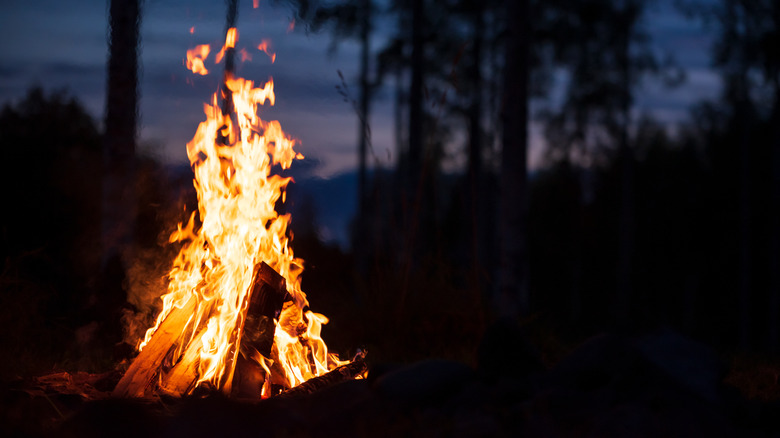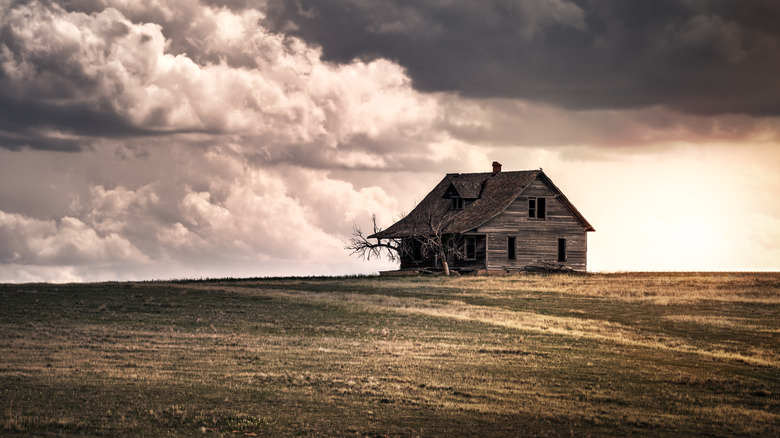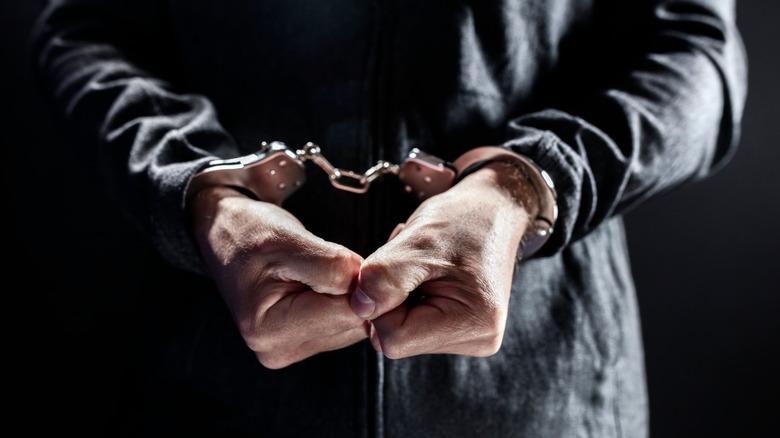Why The Fryer Brothers Arrest Was A Lucky Coincidence
On November 17, 1973, the Argus Leader writes that a group of five teenagers headed to the Gitchie Manitou State Preserve in Iowa for a night of fun. Oxygen reports that the group was from nearby Sioux Falls, South Dakota, and consisted of Stewart Baade, 18, his brother, Dana Baade, 14, Mike Hadrath, 15, Roger Essem, 17, and Sandra Cheskey, 13. The plan was to enjoy a campfire and smoke marijuana. However, their laid-back outing quickly turned into a scene straight out of a horror movie. Seemingly out of nowhere, they were attacked by brothers Allen Fryer, James Fryer, and David Fryer.
According to the Des Moines Register, the Fryers, who were then in their 20s, began shooting at the teens. As the Argus Leader explains, they informed the group that they were narcotics officers. They added that they were busting them for using marijuana. As they rained the site with gunfire, Essem died. Stewart Baade and Hadrath were injured but alive. The Fryers subsequently told Stewart, Dana, Hadrath, and Cheskey to follow them up a path. Allen Fryer then told Cheskey to get into his truck. Although she believed that her friends were going to be okay, Oxygen notes that James and David shot them to death once Allen and Cheskey left the scene.
The Gitchie Manitou murders had one survivor
After the massacre, the Fryer brothers went to a farmhouse in South Dakota (per Des Moines Register). There, James sexually assaulted Sandra Cheskey. Prior to this, Cheskey had spoken to Allen, whom Oxygen states was referred to as "the boss." Cheskey later recounted (via Des Moines Register), "I told him, 'I'm only 13.' And that really shocked him (Allen), and he would just tell me then, 'I'll do what I can to get you out of this.' Instead of killing Cheskey, he took her home. The authorities note that Allen likely began to humanize Cheskey. Nevertheless, Allen did threaten Cheskey and told her that she would be killed if she went to the police.
Per the Argus Leader, the bodies of the four teens were discovered the next morning by a couple that was test-driving a new car at Gitchie Manitou. Oxygen writes that Cheskey subsequently went to the police. The Des Moines Register writes that the authorities were at a loss as to why Cheskey lived while the others were slain. Despite this, the police drove her around the area to locate the farmhouse she had been taken to.
Cheskey later said (via The Des Moines Register), "They just thought that I knew the names of the people that did it, and they wanted them. They didn't want to do all this driving around because, in their minds, they thought, 'Why would they let her go? Why did only one of the three rape her?' To them, it seemed unbelievable."
If you or anyone you know has been a victim of sexual assault, help is available. Visit the Rape, Abuse & Incest National Network website or contact RAINN's National Helpline at 1-800-656-HOPE (4673).
Sandra Cheskey recognized her assailant's vehicle
The Argus Leader reports that the police continued to drive Sandra Cheskey around Sioux Falls in hopes that she would remember where she had been assaulted. On November 29, only days after the murders, Oxygen writes that Cheskey identified both the farmhouse and Allen Fryer. Cheskey spotted the farmhouse she had been taken to due to a distinct detail — a large red gasoline tank. As she pointed to the house, Allen coincidentally drove past in the same truck he had abducted her in. At that moment, Cheskey exclaimed (via Oxygen), "That's him, that's the boss." Soon after, all three brothers were charged and tried for the murders.
The Argus Leader explains that Fryers went to Gitchie Manitou to hunt animals. When they encountered Cheskey and her friends, they took the opportunity to kill them instead. The Des Moines Register states that Allen, James, and David were all eventually sentenced to life in prison. Per Oxygen, the three are currently incarcerated at Iowa State Penitentiary in Fort Madison, Iowa. Cheskey has gone on to say that she still lives with the trauma that she endured on that frightening November night. According to KELOLAND, she helped write a book about her life titled "Gitchie Girl."
Due to the massacre, Gitchie Manitou now has a dark reputation and has been repeatedly vandalized. However, Cheskey is not fond of this. She told KELOLAND, "Instead of spray painting and thinking it's so haunted and stuff, they will just say a prayer for the boys and remember them as the great people they were."


